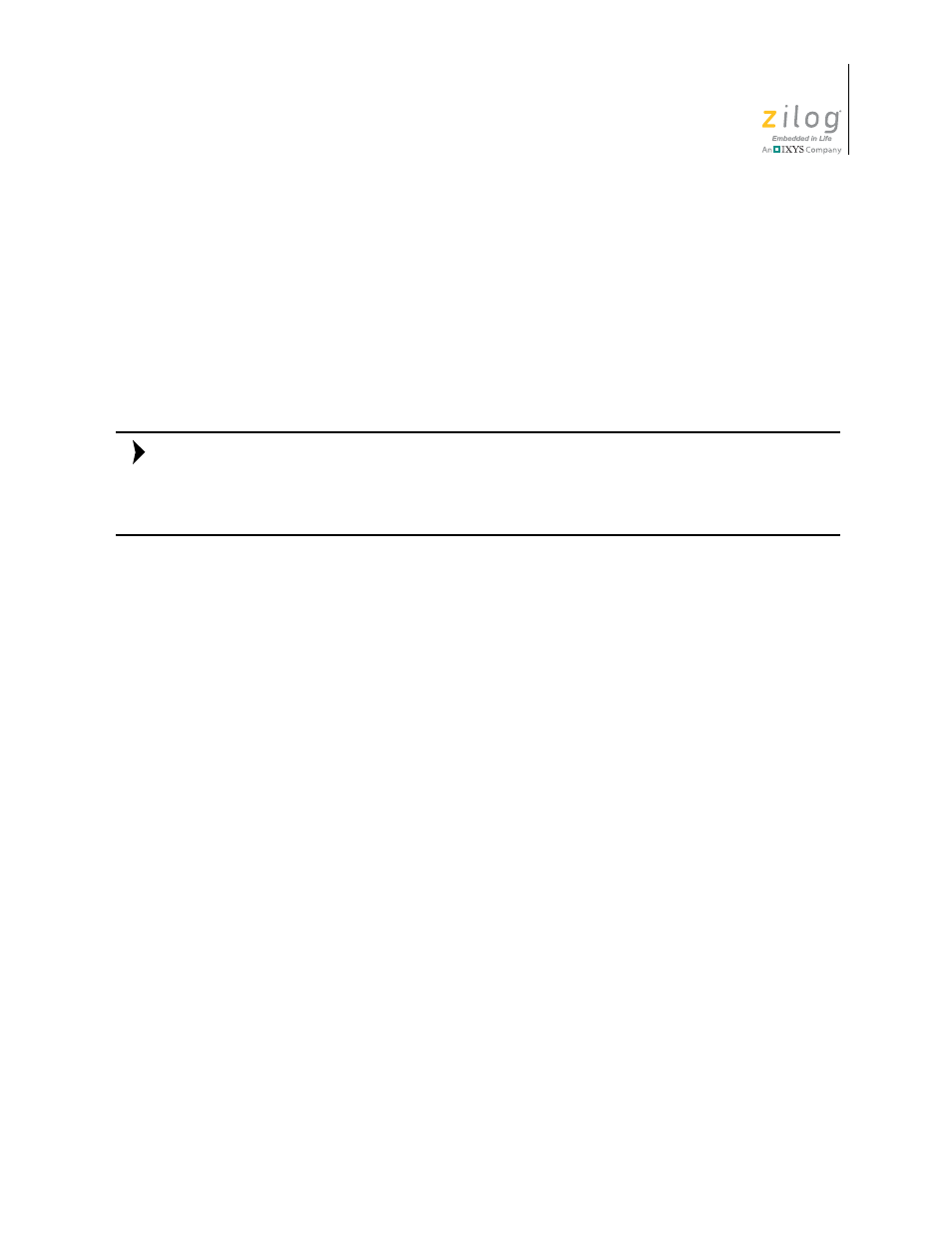Zilog EZ80F91AZA User Manual
Page 65

UM020107-1211
Creating SSL Applications
ZTP Network Security SSL Plug-In
User Manual
59
2. To receive TCP data over the TCP-SSL connection, the
recv
API is used. For exam-
ple, to receive 10 bytes of TCP data and place the data in a buffer called
MyBuff
, the
following code fragment can be used:
BYTE MyBuff[100];
INT16 Status;
Status = recv( ConnectionDev, MyBuf, 10, 0);
The exact same application is used to receive 10 bytes of data through the SSL layer.
Although the data sent between the client and server SSL layers is encrypted, the data
passed between the ZTP SSL layer and the user application is nonencrypted. Therefore, the
code that retrieves data from the ZTP TCP layer can also be used to retrieve decrypted data
from the ZTP SSL layer without modification.
To send TCP data, the
send
API is used. For example, to send 10 bytes of TCP data
from a buffer called
MyBuff
, the following code fragment is used:
Status = send( ConnectionDev, MyBuf, 10, 0);
The exact same application is used to send 10 bytes through the SSL layer.
3. To close an underlying TCP-SSL connection, the
close_s
API is used, with the
socket of the connection device (used during data transfer) passed as a parameter.
close_s( ConnectionDev );
The exact same
close_s
API is also used to close the SSL session represented by the
SSL connection socket. When it is no longer necessary to maintain the TCP server in a
running condition, the application can close the TCP socket by issuing the
close_s
API and using the TCP socket ID.
close_s( ServerDev );
Again, the exact same
close_s
API is also used to close the SSL server device.
In summary, any ZTP TCP server application is converted to use SSL for secure data
transfer by changing the socket type used. The syntax and semantics of all other data
transfer APIs are identical for both TCP and SSL.
Note:
